A Campus Trek, Wildlife Camera In Hand
Esperanza elementary school students learn about camera trap technology.
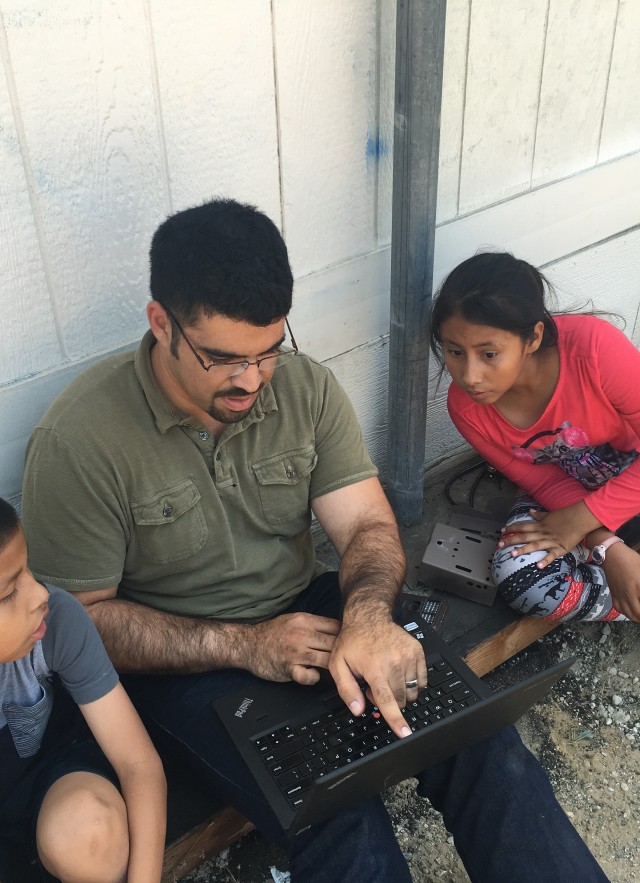
Published August 23, 2016
Guest authors: Kevin Aguilar and Jennifer Gamino, 5th grade students at Esperanza Elementary, with their principal, Brad Rumble
Esperanza elementary school students wrote about another one of their urban wildlife explorations on campus with the help of their renaissance principal, Brad Rumble.
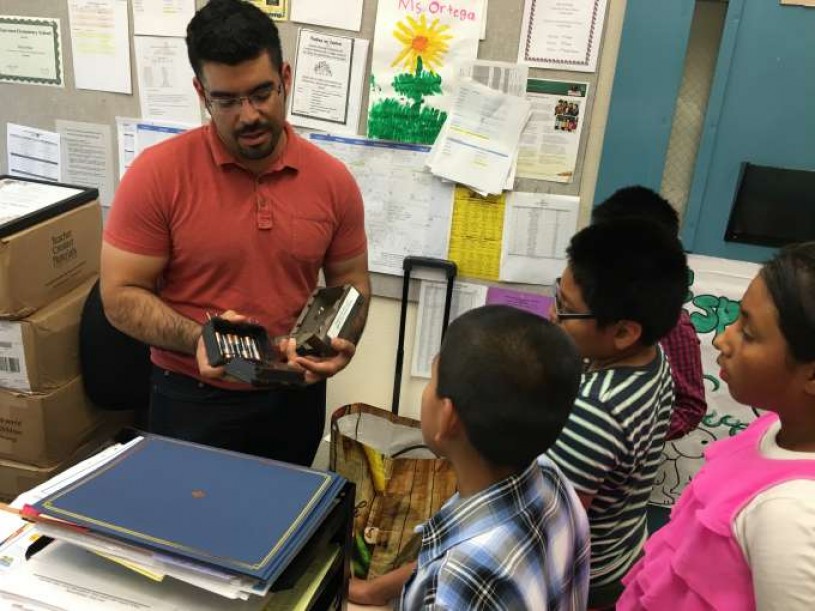
Once again, they knocked it out of the park! I spent an afternoon with some students to talk about the ins and outs of camera trap research. From finding an optimal location, the technology, why camera traps are handy tools for assessing the health of an ecosystem, to cool local discoveries already made with camera traps (obviously I talked about P-22 our Griffith Park Mountain Lion).
The initial idea of the camera trap was to revisit an outreach initiative I tried out at Brad's previous school, Leo Politi Elementary. I had donated a camera trap to Leo Politi, which was a big hit until it was stolen a few months later.
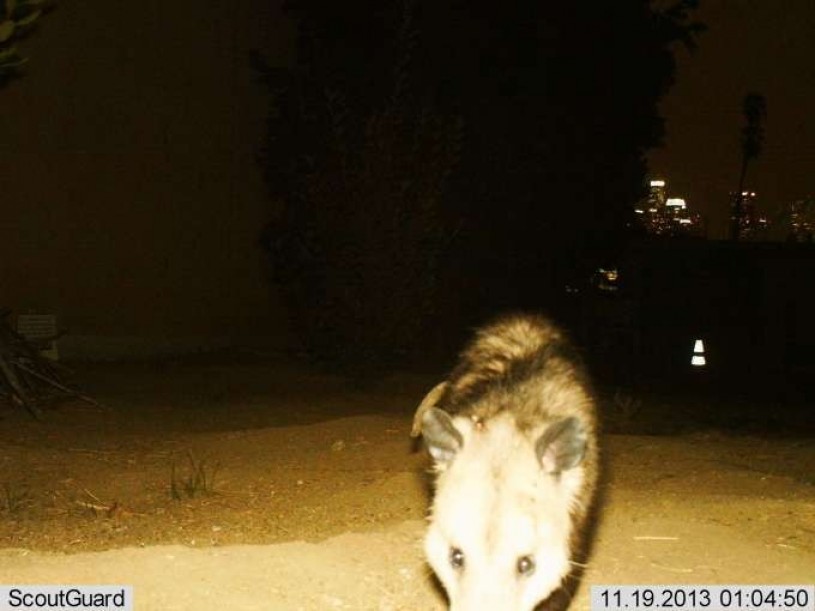
The idea for the Esperanza camera was to monitor their new campus habitat as part of a campus BioBlitz (which was reported on in this PC Magazine article). However, the idea expanded into involving the students in tracking the progress of the garden as plants establish and new wildlife species are attracted to the area.
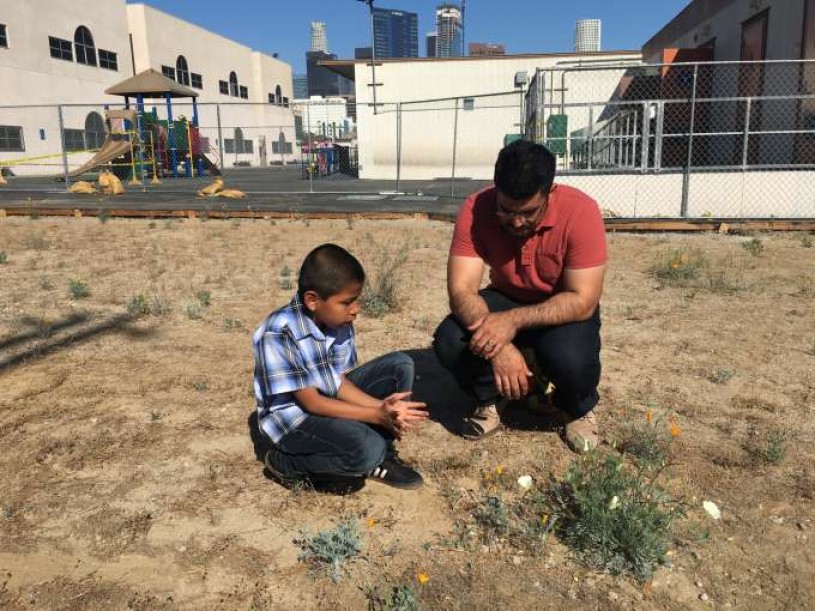
Students were so excited about writing this blog that they came in on their Summer vacation to work on it. Their previous article about their encounter with a poorwill was equally special, but this article was personally special because I had the wonderful honor to be included in their story. Needless to say, it was a very moving experience to hear them tell the story in front of me. When you read it, you may enjoy it even more if you imagine two young voices reciting the story in sync.
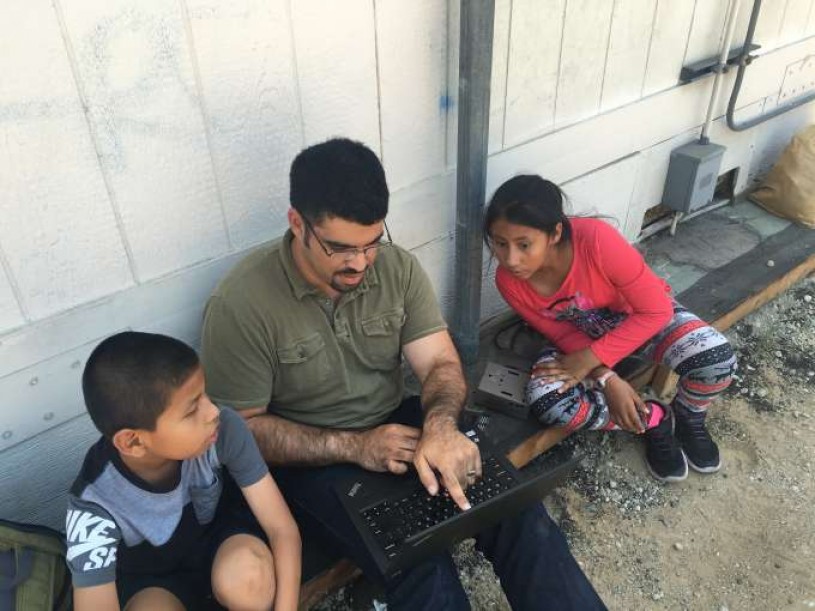
"Wildlife cameras are really cool, so it was a happy problem for us to walk the campus with Miguel Ordeñana of NHM to find the best place to install one. We first considered the courtyard, where we’d been observing a mourning dove on her nest high in a coral tree for a week or so. Sure enough, her long tail feathers were evident far outside the nest.
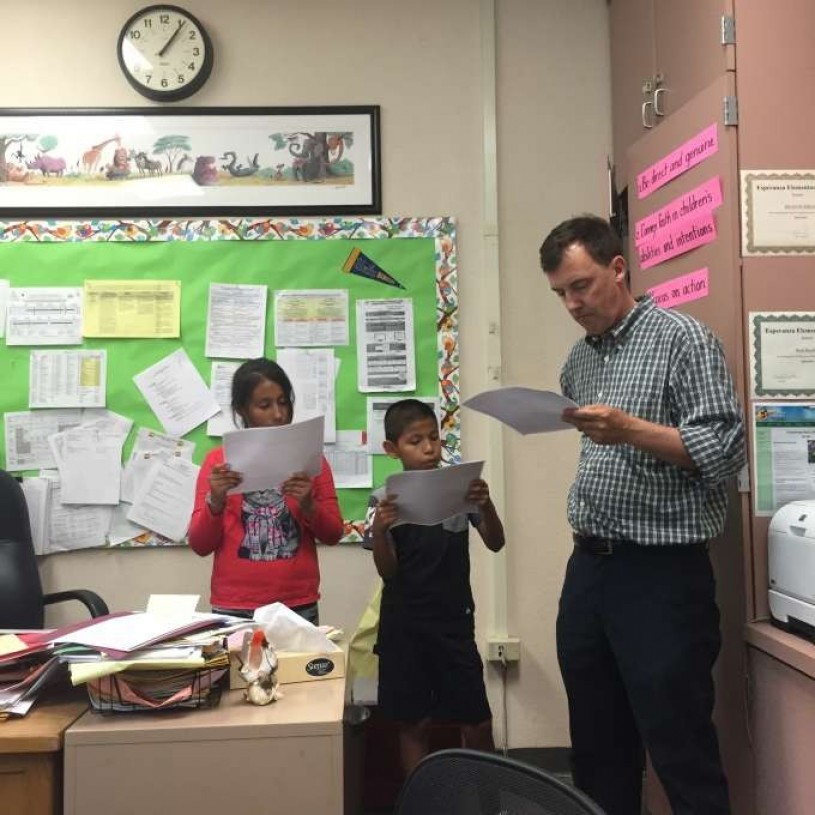
From there we visited the southwest corner of campus, where a bungalow and the asphalt below it were removed, making room for the native California habitat we will plant this November. Here two camouflaged mourning doves, who were foraging on the ground, startled us when they suddenly fled. Among the scores of California golden poppies in bloom there, one plant stood out because all its blooms were a brilliant white. None on this plant were orange. Why not? We decided to research this on another day.
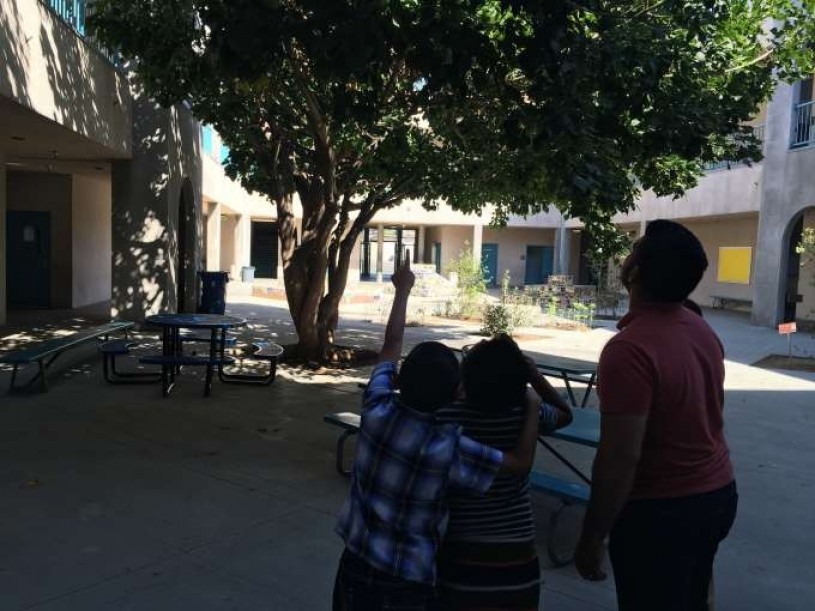
An interesting patch of biodiversity is our newly planted trio of palo verde trees on W. 7th Street, so we headed there to take a look. The trees’ bright yellow flowers were teeming with pollinators, including carpenter bees, paper wasps, and European honey bees. Would a motion-activated wildlife camera be able to capture it all?
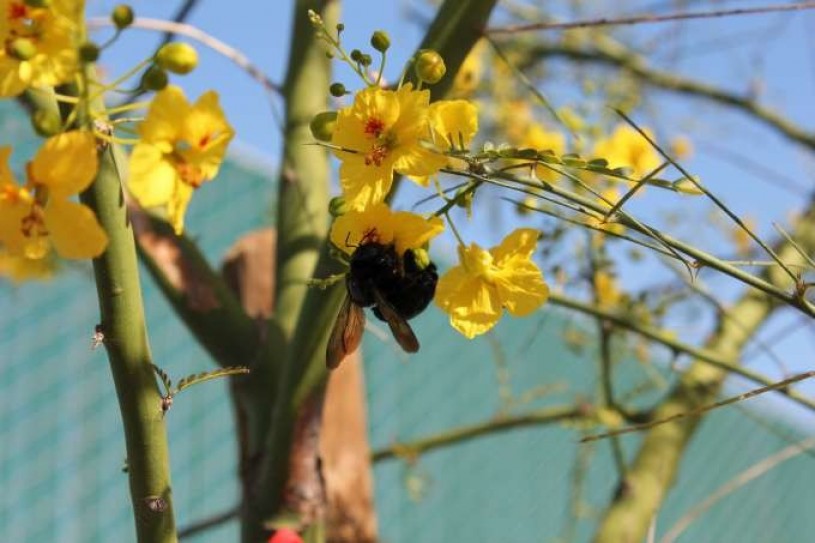
As we walked towards another potential site for the camera, a large black bird flew above us. Quickly we narrowed it down to an American crow or common raven. Big-time bird detective Yonatan happened to be playing near us. He explained that he was sure it was a common raven because of its wedge-shaped tail. Plus it was circling lazily in the sky. You would think a parking lot on Wilshire Boulevard is not where the wild things are, but ours is different. Right along its north edge there is a 100-foot strip of dirt.
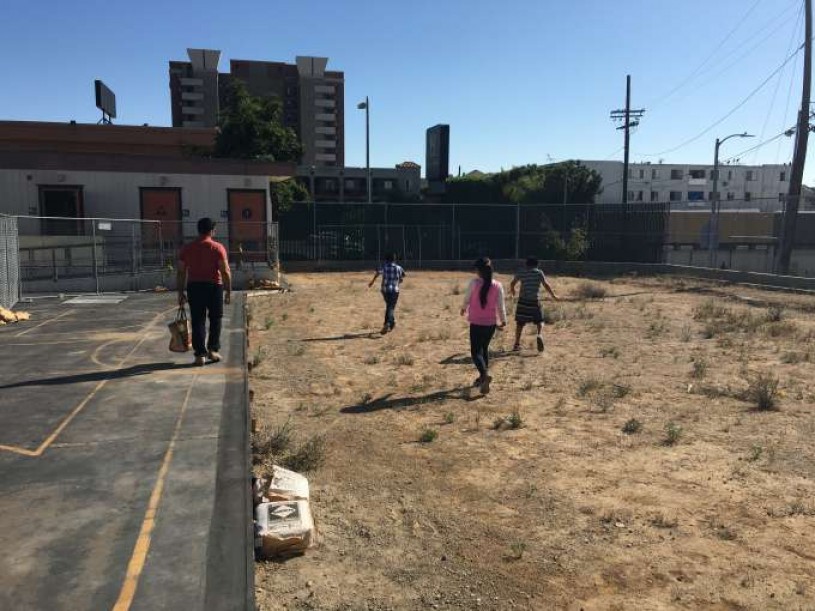
There’s even a big native plant called mule fat there. Just as we started discussing where a camera might be installed, a lizard darted by. It probably was interested in the lady beetle larvae we observed in the soil. Not a bad place to put a wildlife camera! As for that lizard, we still are curious whether it was a western fence lizard or southwestern alligator lizard.
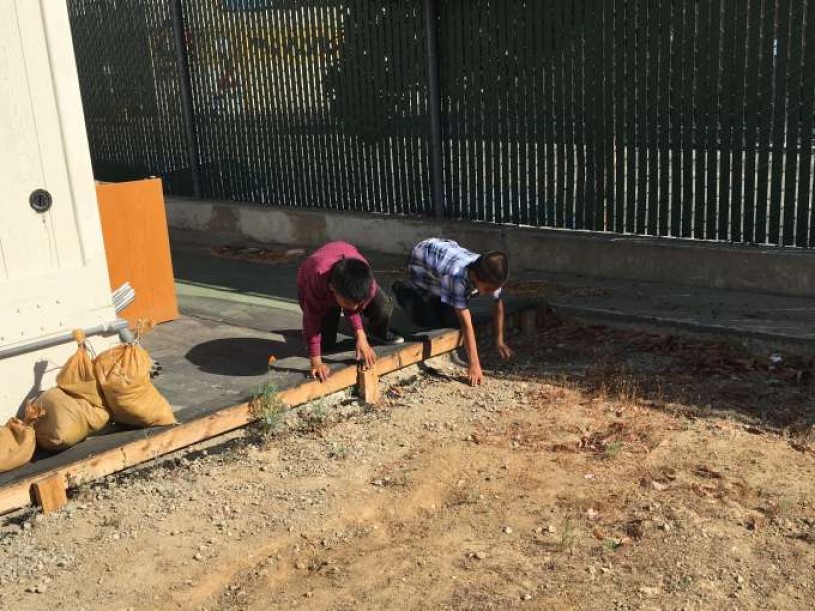
When you take a closer look at your schoolyard, you won’t believe all the places where a wildlife camera would be busy. In the end, we decided the best place for ours is in the area where we are going to create a native California habitat. Miguel didn’t just install the camera there. He guided us, and today the camera remains.
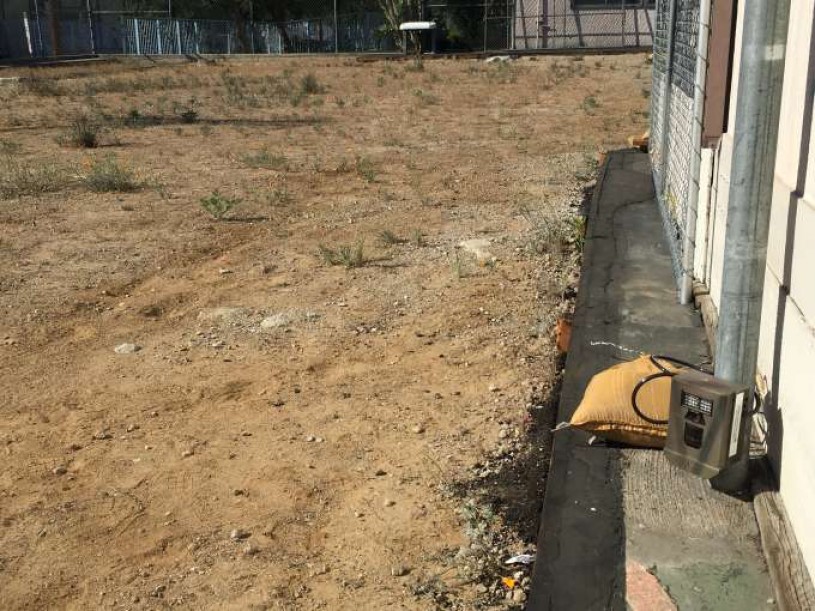
With the camera mounted, we all headed upstairs to our school library to dig in to our books on natural history. They’re in nonfiction--the 500’s. Miguel had us talking about our local coyotes and mountain lions, including P-22. We don’t expect our school’s wildlife camera to capture any images of them--but you never know!"
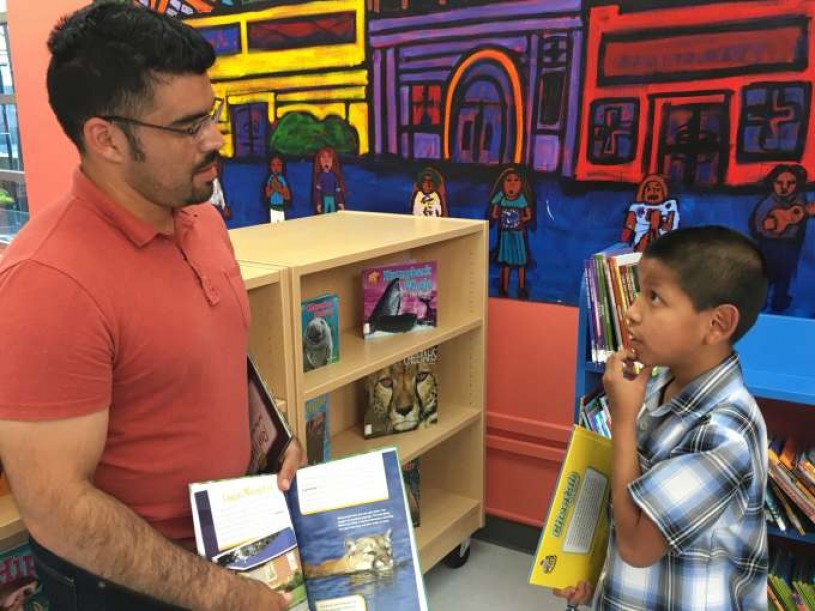
So far we have detected cats, rats, opossums, and birds.
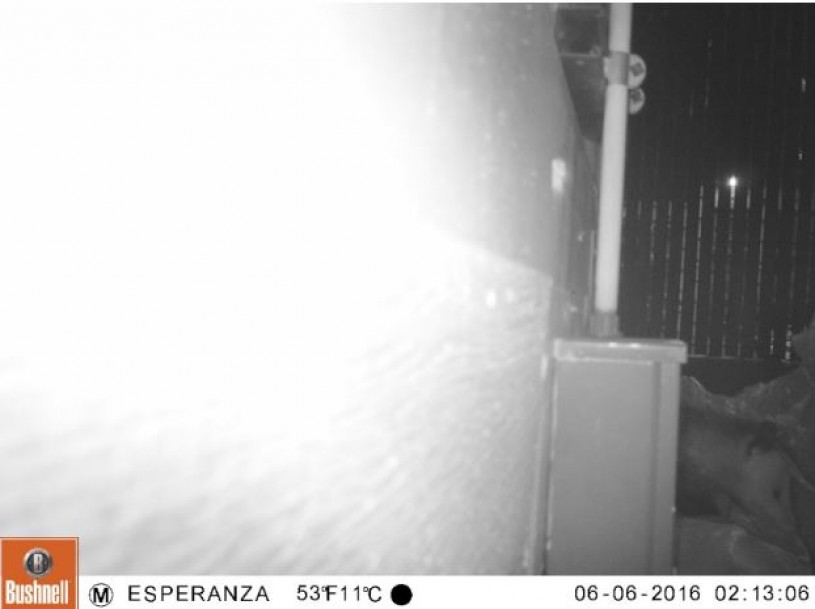
The camera has yet to detect P-22 or any large carnivores, but there is still plenty of time. After all, limitations seem to vanish under Brad’s leadership. Brad Rumble has had a history of uplifting schools and communities by raising funds for campus habitat restoration. He also arranged for the schoolyard to be open after hours to provide the community with a safe gathering place and to keep kids out of trouble. I have no doubt the garden at Esperanza will be just as successful as the one at Leo Politi. Now that the pavement has been ripped out and the plants are being planted, it is only a matter of time until this garden transforms an entire school and community's relationship with nature.